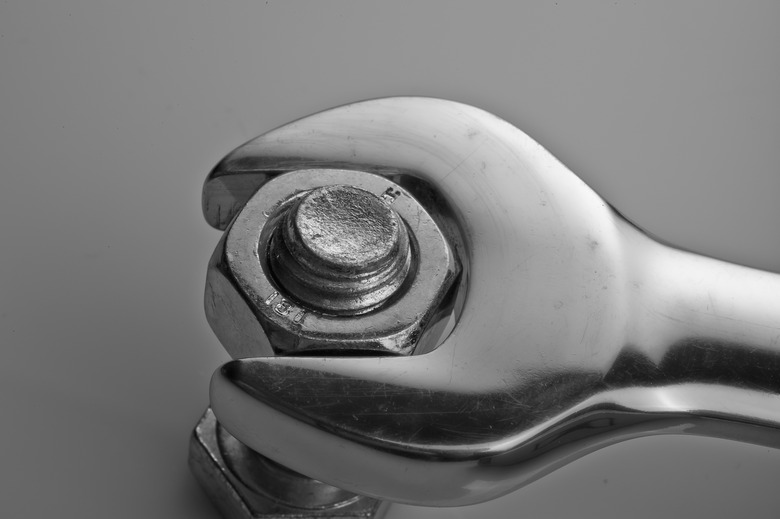How To Convert Torque To Force
Torque is the application of force through the use of a lever rotated around an axis. A good example of torque in action is a wrench. The head of the wrench grabs a bolt and applies pressure to it. If you kept applying pressure, the wrench would eventually rotate around the bolt. The farther out from the bolt you apply pressure, the more torque you will have.
TL;DR (Too Long; Didn't Read)
The equation, Force = Torque ÷ [Length × sin (Angle)], converts torque into force. In the equation, Angle is the angle at which the force acts on the lever arm, where 90 degrees signifies direct application.
Find Lever Length
Find Lever Length
Measure the length of the lever. This will be the distance out at a perpendicular angle, that is, 90 degrees, from the center. If the handle is not at a perpendicular angle, as some ratchet adapters allow, then envision an imaginary line extending from the bolt. The length will be the perpendicular distance from this imaginary line to where force is applied on the ratchet handle.
Measure the Torque
Measure the Torque
Determine the torque. The easiest way to do this in the real world is to use a torque wrench, which gives you a measure of torque as you apply force on the wrench handle.
Determine Lever Angle
Determine Lever Angle
Determine the angle for which pressure is applied on the lever. This is not the angle of the lever, but rather the direction the force is applied in relation to the lever point. If force is being applied directly to the handle, that is, at a perpendicular angle, then the angle is 90 degrees.
Set up Torque Equation
Set up Torque Equation
Use the formula:
\(\tau = LF\sin{\theta}\)
The "sin (θ)" is a trigonometric function, requiring a scientific calculator. If you were applying perpendicular force to the handle, you could eliminate this part, since sin (90) equals one.
Rearrange Torque Equation for Force
Rearrange Torque Equation for Force
Convert the formula to solve for force:
\(F=\frac{\tau}{L\sin{\theta}}\)
Use Force Equation with Values
Plug your values into the formula and solve. As an example, say you applied 30 foot-pounds of torque at a perpendicular angle, that is, 45 degrees, at a lever point 2 feet from the center:
\(F=\frac{30}{2\sin{45}}=21.22\text{ pounds}\)
Cite This Article
MLA
Taylor, C.. "How To Convert Torque To Force" sciencing.com, https://www.sciencing.com/convert-torque-force-7495906/. 13 December 2020.
APA
Taylor, C.. (2020, December 13). How To Convert Torque To Force. sciencing.com. Retrieved from https://www.sciencing.com/convert-torque-force-7495906/
Chicago
Taylor, C.. How To Convert Torque To Force last modified March 24, 2022. https://www.sciencing.com/convert-torque-force-7495906/
